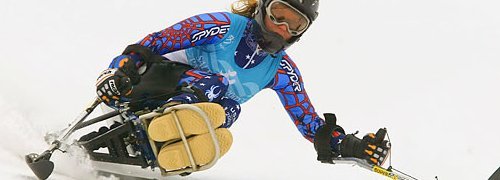
Paralympic alpine skiing will leave the spectators in awe
“When you reach for the stars, you may not get one, but you won't come up with a handful of mud, either.”
UnknownParalympic alpine skiing is all about sheer determination as well as mind over matter.
There are two aspects within this sport that must be dealt with that we humans, who are blessed with sound bodies will find to be mind boggling. Those are the BODY and second the SKILL.
First, the BODY
The next morning I could hardly get out of bed. My entire body cried out "enough is enough." It took me the better part of the week and a big hand-full of Tylenol to make it through.
As I said, I was in good physical condition at that time.
Now imagine what it must be like to be an athlete participating in Paralympic alpine skiing events. Some ski on one leg. Some ski with visual impairment. Paralympic events accommodate those athletes with other physical disabilities such as spinal injuries, amputation, cerebral palsy.
Some skiers with physical disabilities will use specialized equipment adapted to the individual as well as special single skies, a sort of sled called a sit-ski or other orthopedic aid to enable them to compete. Visually impaired skiers may use a sighted guide who will use voice signals to lead the skier through the course. Standing skiers may use a type of crutch with a small ski attached to maintain their balance. Those who sit on the Mono Ski will use shortened versions of the crutch pole.
It Takes Skill
Amazingly, the skiers will reach 100 km per hour as they race down the slopes. The four events are Slalom, Giant Slalom, Super G and Downhill. These events are open to both ladies and gents.
Slalom
The slalom uses the shortest course with quick turns. The way it works is that in the morning each raced makes a run to the bottom. Then in the afternoon the course is changed and the skiers run that course. After the runs are completed the times are added together and the fastest time determines the winner.
Super G
The super-g or giant slalom is made up of the slalom and the downhill. It features a long course with lots of speed. The skiers make only one run down to the bottom with the fastest time declared the winner.
Giant Slalom
The giant slalom is basically the same as the slalom. The course is arranged with wider and smoother turns. As with the slalom race, there are two runs on different courses on the same day and the fastest time decides the winner.
Super Combined
This is a very demanding event. It consists of one downhill race followed by two slalom runs down the short course. When the times are added together the fastest time is declared the winner of the event.
Downhill
The downhill race takes place on the longest course and maximum speeds are achieved by the racers. Every athlete must make one run down the hill with the fastest time determining the winner of the event. Paralympic alpine skiing will leave you really excited.
Skiers from more than 40 countries are expected to enter the Paralympic alpine skiing races being held at Whistler during the 2010 Paralympics games to be held shortly after the 2010 Vancouver Olympics. Be sure to make every attempt to attend.
Paralympics Biathlon skiing is extremely demanding. Check it out.
Paralympics-cross-country-skiing. Be sure to check this sport out.
Wheelchair Curling is a sport where strategy takes over.
Return from Paralympic alpine skiing to Whistler Outdoors



